Teaching Traveling: Interested in teacher travel opportunities and scholarships to study WWII and the Holocaust in Europe and Japan?
Read on to learn about some amazingly powerful educational trips, as explained by Illinois teacher, Stephanie Krzeminski.

Stephanie: Hello! I have been teaching for 12 years, and during that time I have been in both private and public schools. I have taught Modern World History, Honors World History, AP Seminar and Sociology. My background is in Humanities, and I love looking at history from a social, emotional, and cultural standpoints.
Like many, I didn’t really start traveling until I was older. Early in my career, I desperately wanted to travel, both for personal enrichment and to better my students, but I made a lot of (incorrect) assumptions about how much it would cost. Over the past 4 years however, I have found more travel opportunities that fit a teacher’s budget!
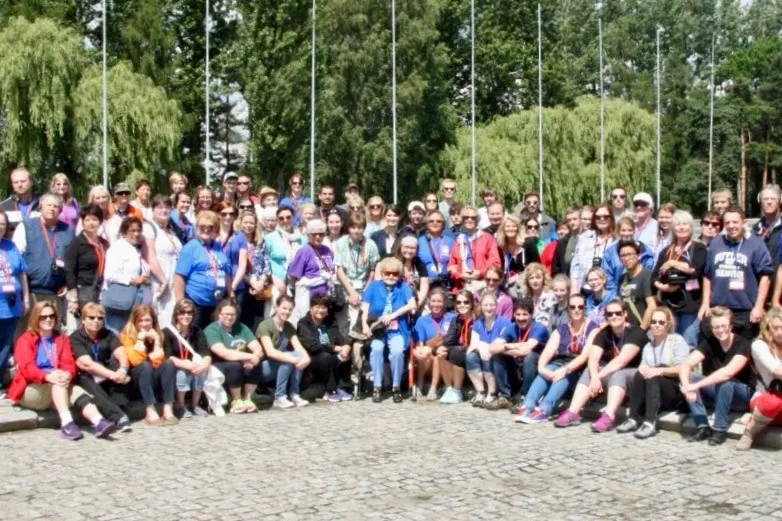
TT: Important epiphany! Tell us more about your travels.
S: It wasn’t until 2014 that my international travels really began. In the summer of 2014, I had the privilege to travel with CANDLES Museum and Holocaust survivor, Eva Kor, to Poland.
Over 9 days, I learned so much from Eva and the staff at Auschwitz about the Holocaust, medical experiments on twins (Eva and her sister, Miriam, were experimented on by Josef Mengele) and about the significant history of Krakow and Oświęcim.
On this trip I met Dr. Michael Berenbaum (former Director of the U.S. Holocaust Memorial Museum), Rainer Hess (grandson of the Kommandant of Auschwitz, Rudolf Hess), and Michael Worle (grandson of Otmar von Verschuer, director of Berlin’s Kaiser Wilhelm Institute and Dr. Mengele’s boss).
Then, in 2017, I had the opportunity to travel with Smith College and the Five Colleges Center for East Asian Studies to Japan. For 2 weeks, we traveled from Tokyo, then to Hiroshima and then to Nagasaki.
While there, we toured museums, met with survivors of the atomic bombings, visited local schools, and had the opportunity for cultural enrichment.
In the future, educational travel opportunities I hope to do include the National Geographic Grosvenor Fellowship and the Two-Week Research Fellowships for PhD Students/Candidates at Yad Vashem in Israel.

TT: Amazing. How do you find your travel opportunities?
S: My travel to Poland was ultimately the result of two events. I first heard about this tour during a presentation I attended at the Illinois Holocaust Museum. Even more incredible, it was during a presentation that Michael Berenbaum gave that I first heard of a survivor-led tour, and so when he appeared on the trip, himself, I felt like things had truly come full circle.
Then, in the spring of 2014, I was taking the “Holocaust and Human Behavior” offered through Facing History and Ourselves, I was reintroduced to the trip, and decided that this was the opportunity of a lifetime, so I had to be there!
My travel to Japan was as a result of taking a National Consortium for Teaching Asia online course that prequalified me to travel. Once I had completed the course, “War and Peace: Voices from Japan”, I was eligible to go!
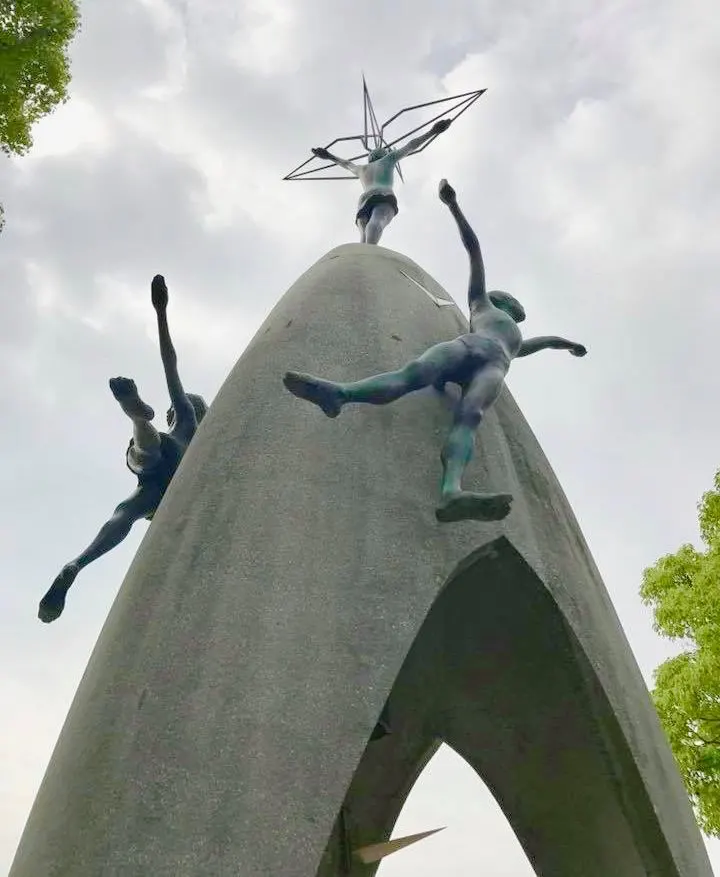
TT: Thank you for sharing these resources. How did you find the money to fund your travel?
S: Back when I had first heard about the trip with Eva, I didn’t have the means to travel, and it honestly never occurred to me that I could apply for a travel scholarship.
However, by 2014, I had a bit more savings, and discovered that there were scholarships for teachers available through the CANDLES Museum. At that time, for 9 days of travel, I paid $1,500 out of pocket!
Since I had taken the NCTA course, our instructor, the fabulous Anne Prescott, had worked on grants to help fund the trip. Because of her hard work and my determination to be on this trip, I only paid about $500 for the 2 week trip!
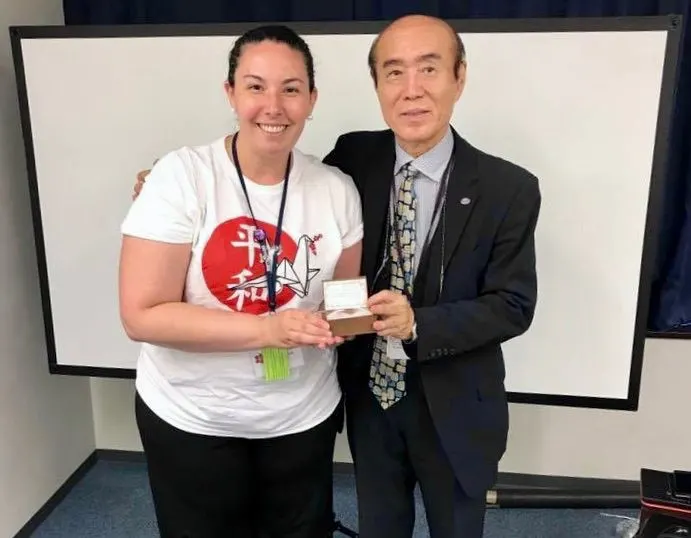
TT: So inspiring and useful to know! Tell us one moment from your travels that was particularly powerful.
S: While in Japan, I had the honor and privilege of meeting Masahiro Sasaki, the older brother of Sadako Sasaki. Sadako is famous in Japan, as she had become a well known child after she passed away from leukemia contracted due to her exposure to the a-bomb in Hiroshima in 1945.
A legend exists in Japan that if you fold 1000 paper cranes, you get to make a wish. When Sadako fell ill in 1955 at the age of 12, she attempted to have her wish granted by folding paper cranes.
Her story has been made into a book, “Sadako and the 1000 Paper Cranes” [Amazon affiliate link] and is still widely read.
When we met with Masahiro, he was kind of enough to tell us her story, answer our questions, and provided each of us with a small gift. He gave each teacher a specially folded paper crane and a badge giving us permission to share her story.
TT: Incredibly moving. How have your travels impacted you as a teacher, and as a person?
S: My travel experiences have not only made me a better person, but a more effective teacher! I use my stories, photos and readings from all of my travels to help enrich class content.
Anthony Bourdain said it best: “It seems that the more places I see and experience, the bigger I realize the world to be. The more I become aware of, the more I realize how relatively little I know of it, how many places I have still to go, how much more there is to learn.”
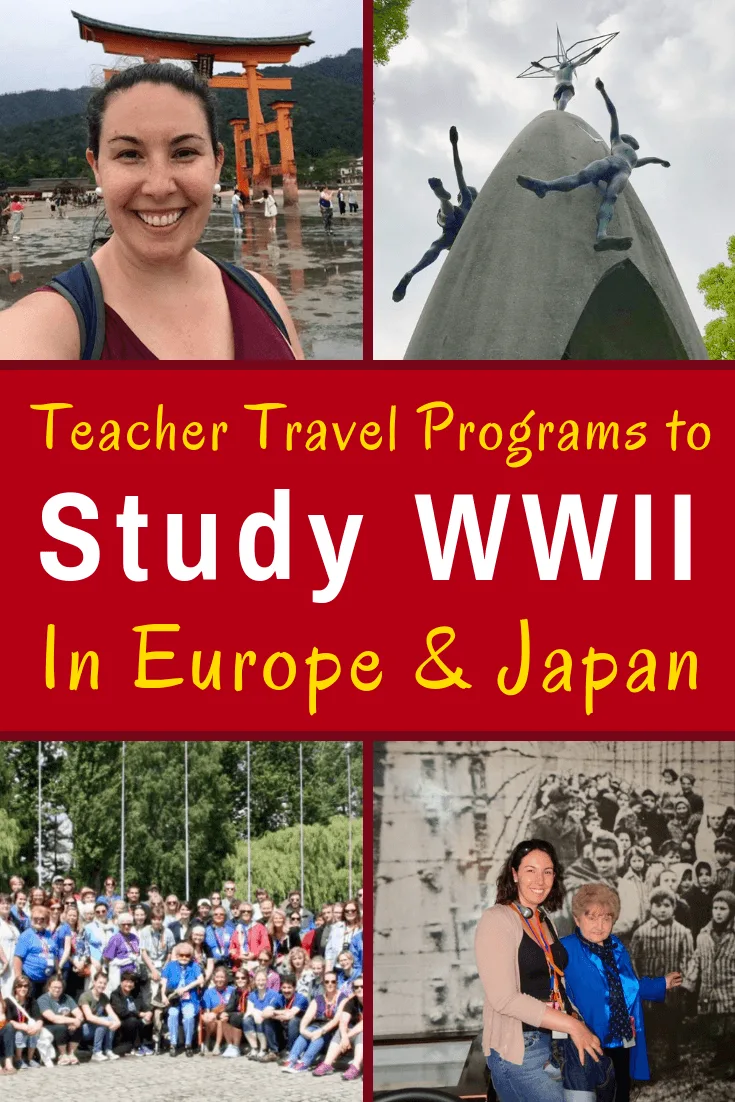
TT: Yes! What advice do you have for teachers who are dreaming of travel, or travelers dreaming of teaching?
S: I spent years thinking that travel would be out of the question for me. I gave myself reasons like, “It’s too expensive” and, “It’s too hard to be away from my family.”
However, I finally made the decision that just like my education, travel is an investment in myself. Moreover, I wanted my girls (Ellie, 7 and Lucy, 5) to see that when your heart and mind are in the right place, you can achieve anything and go anywhere!
Do it now. Don’t wait.
TT: So well said! Thanks, Stephanie! Readers, what questions or comments do you have?
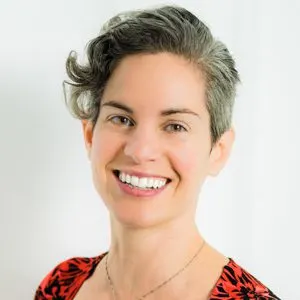
The author, Lillie Marshall, is a 6-foot-tall National Board Certified Teacher of English from Boston who has been a public school educator since 2003. She launched TeachingTraveling.com in 2010 to share expert global education resources, and over 1.6 million readers have visited over the past decade. Lillie also runs AroundTheWorld L.com Travel and Life Blog, and DrawingsOf.com for educational art. Do stay in touch via subscribing to her monthly newsletter, and following @WorldLillie on social media!
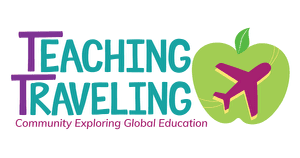
Stephanie Krzeminski
Monday 10th of September 2018
Thanks for reading everyone!!